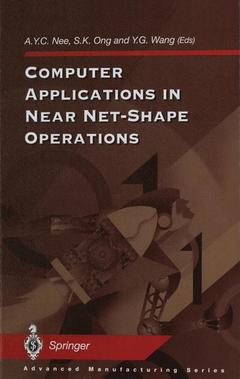Computer Applications in Near Net-Shape Operations, Softcover reprint of the original 1st ed. 1999 Advanced Manufacturing Series
Coordonnateurs : Nee Andrew Y.C., Ong Soh K., Wang Yun G.

Up-to-date information from experts on the latest developments in this field
Increasing demands on the industry to produce components to final net-shapes, make this an important and timely book
This volume addresses the design, analysis and simulation of near net-shape operations using some of the most advanced computer techniques and tools available
Date de parution : 10-2012
Ouvrage de 322 p.
15.5x23.5 cm
Disponible chez l'éditeur (délai d'approvisionnement : 15 jours).
Prix indicatif 52,74 €
Ajouter au panier